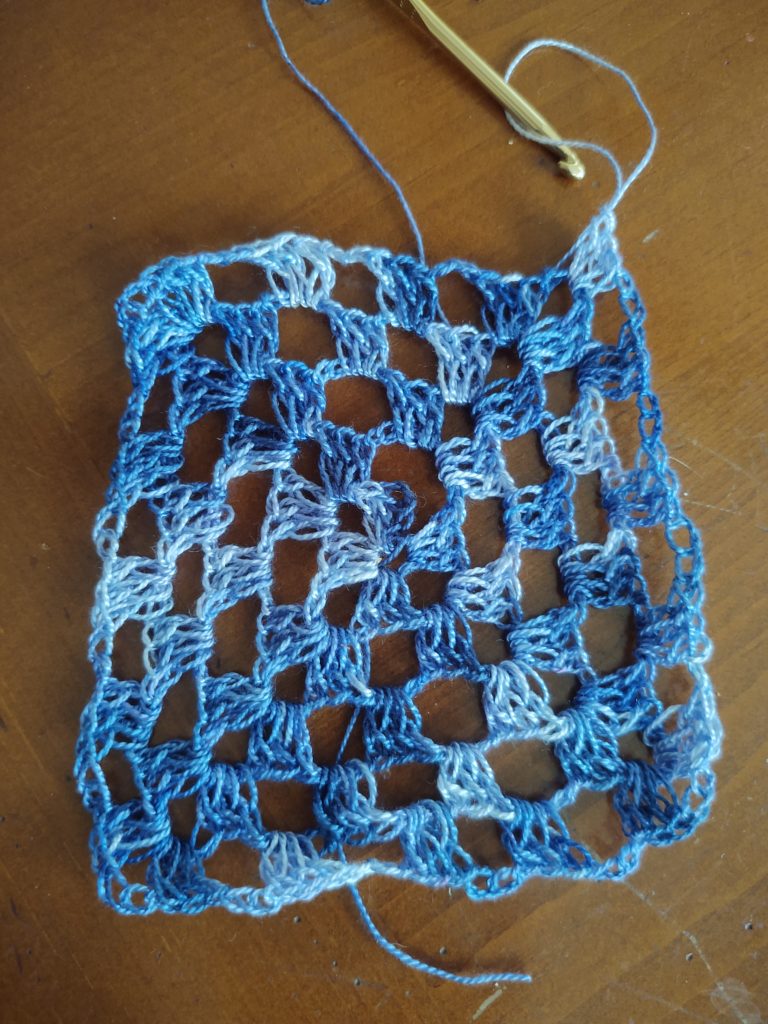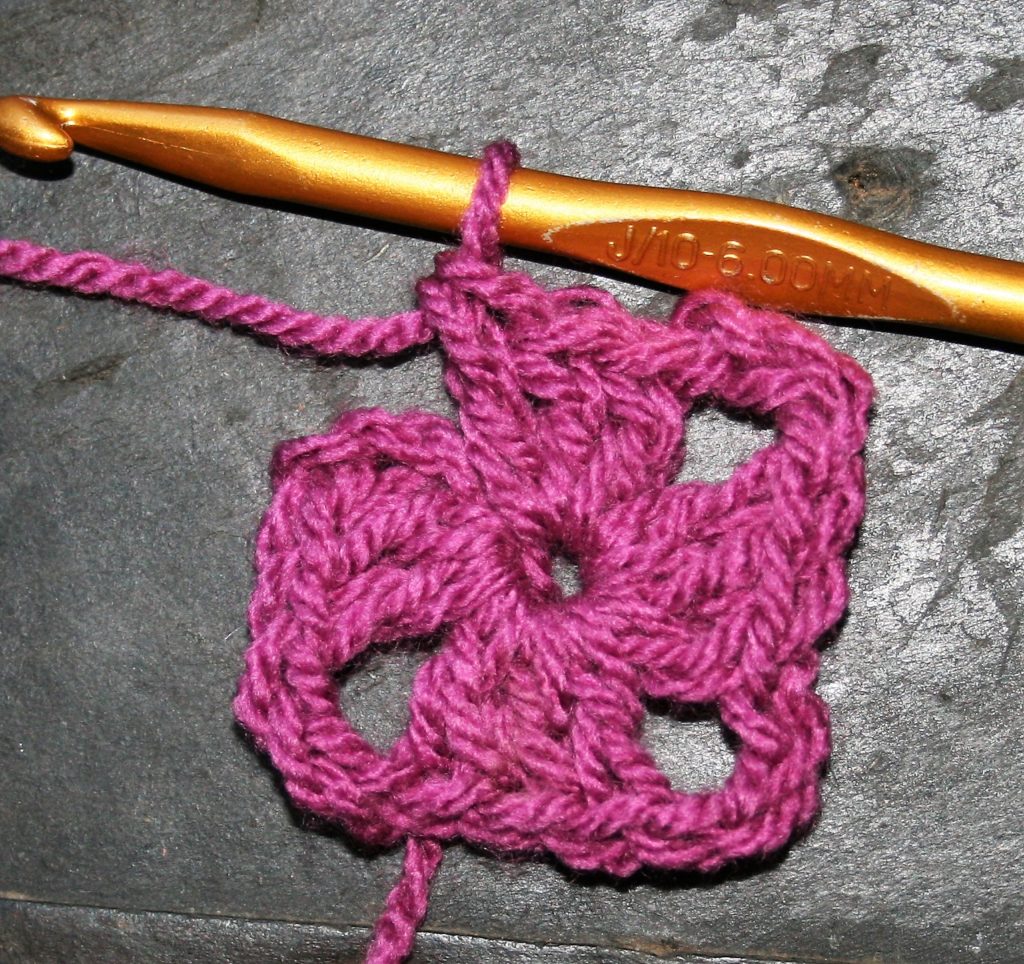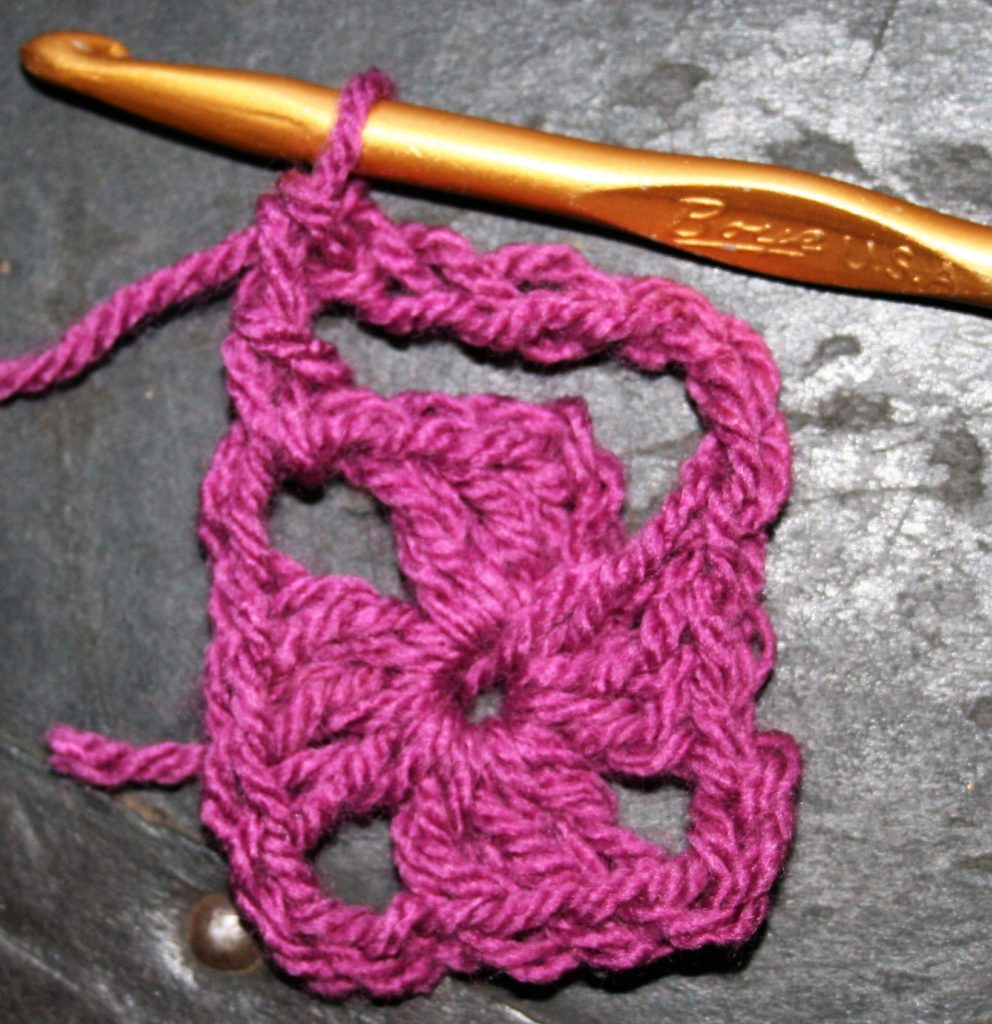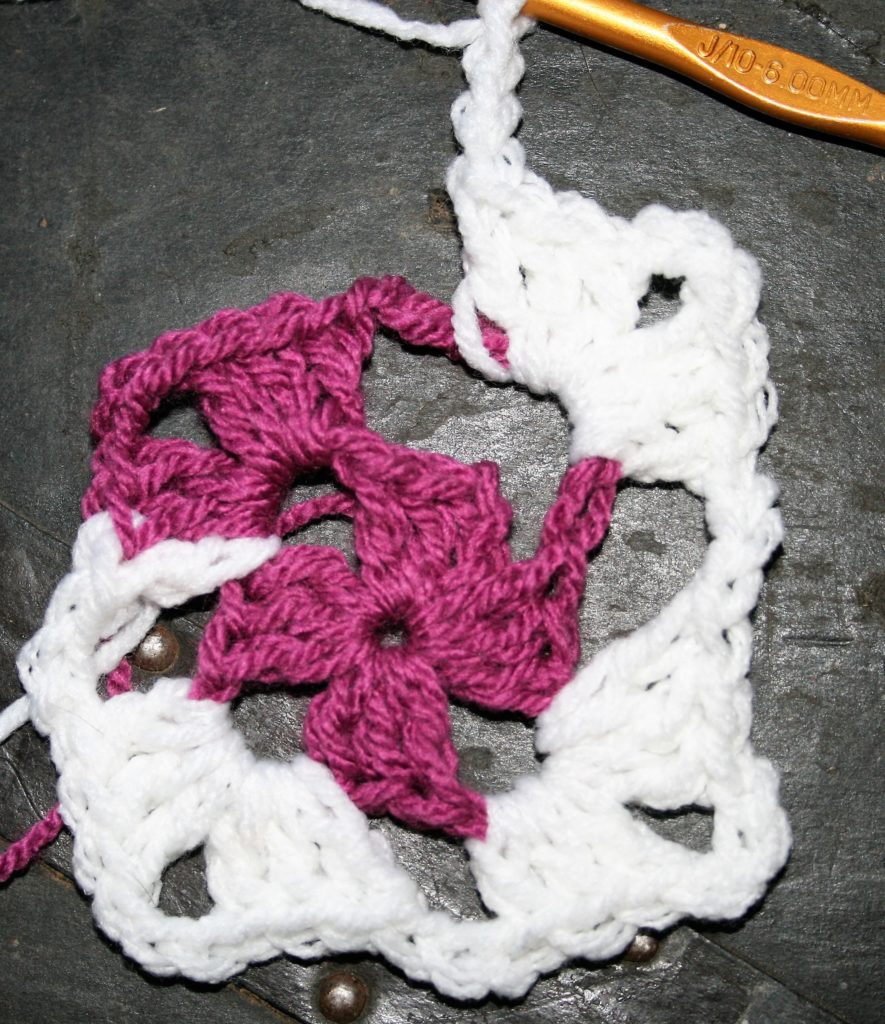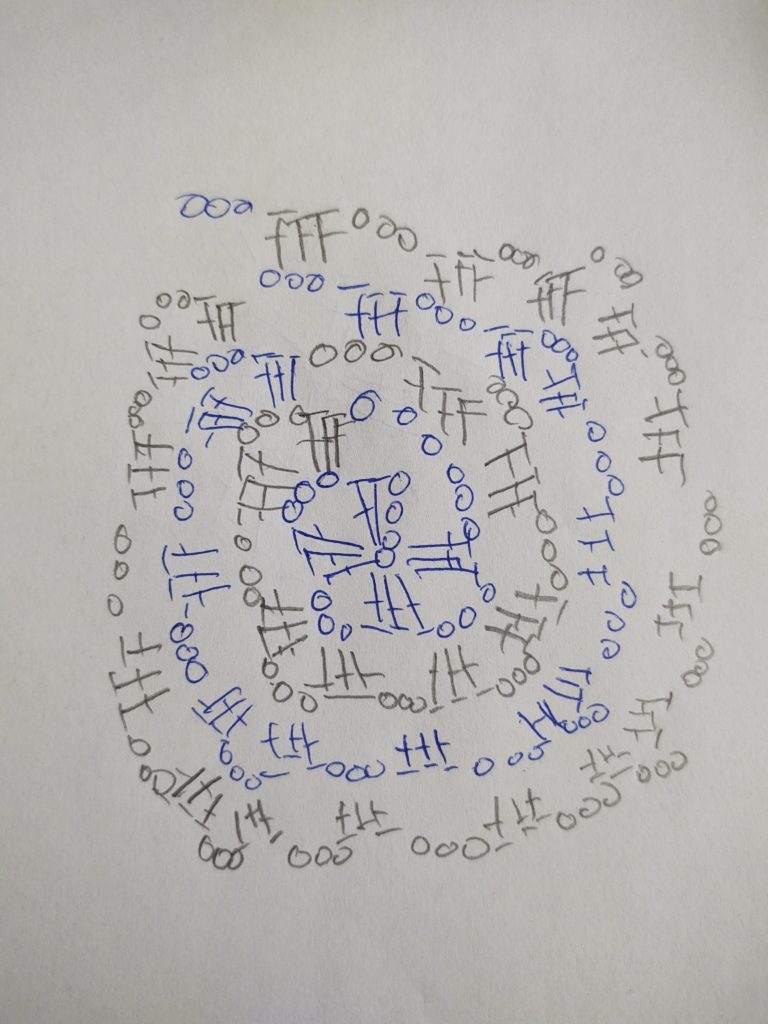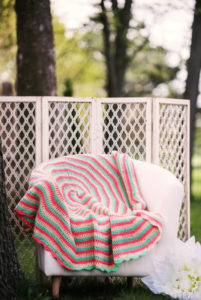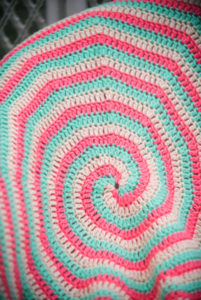Creating swirls of color in crochet are easier than it seems. I love using this technique to create hats and have even used it to create a large circular blanket.
To create a swirl start with any method you like to begin a circle (check out the three most popular). Determine the number of stitches for the first round. In this sample I used 12 double crochet stitches.
Divide the number of stitches in the first round by the number of colors to be used. In this case I am using 2 colors, so that is 6 stitches in each color.
Getting started
Work the first stitch as a shorter stitch, for instance a single crochet. Then work the next 5 stitches as a double crochet.
Add the second color by joining directly after the last stitch made. Either slip stitch and chain or use a standing stitch join (learn that trick here). Work another short stitch, a single crochet, and another 5 double crochets. This completes the first round.
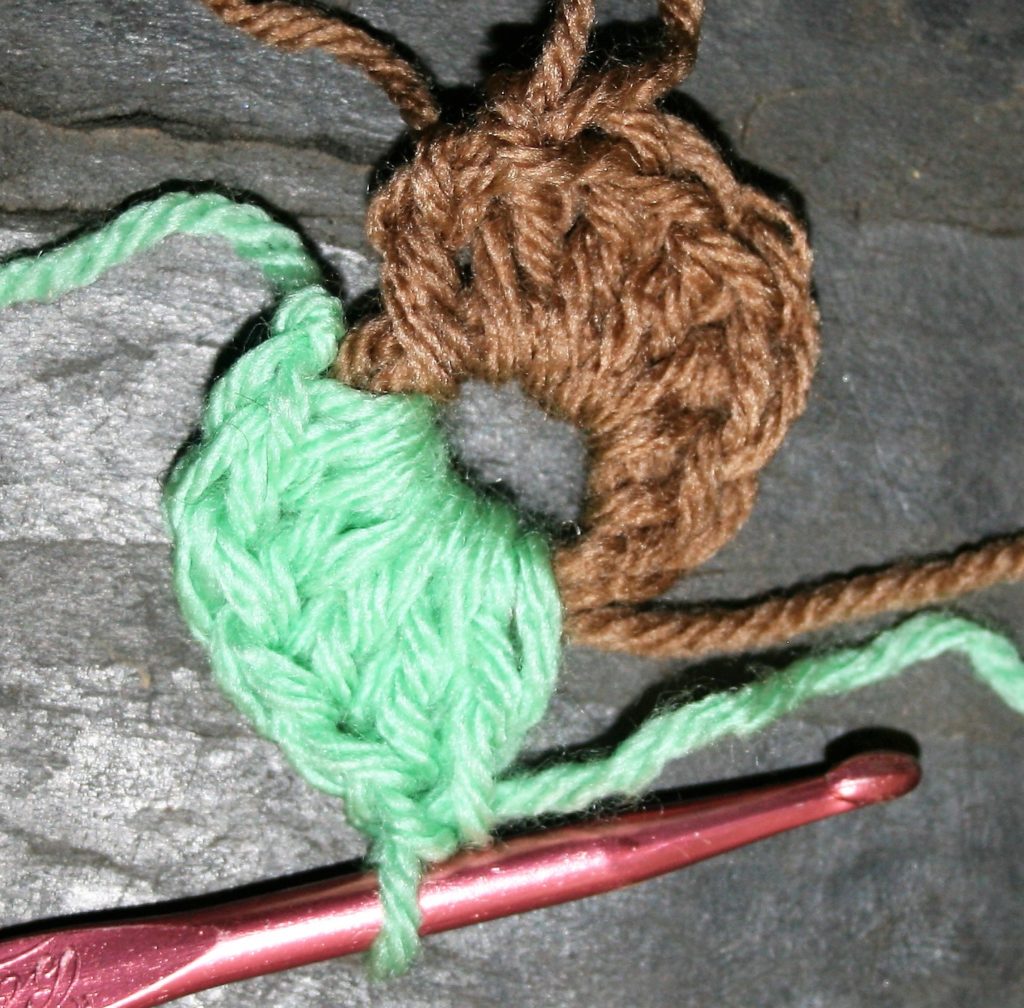
Crochet Color Swirls Round 2
Insert the hook back into the loop of the first color (insert a stitch marker in this stitch), working over the second color work 2 double crochets in each stitch.
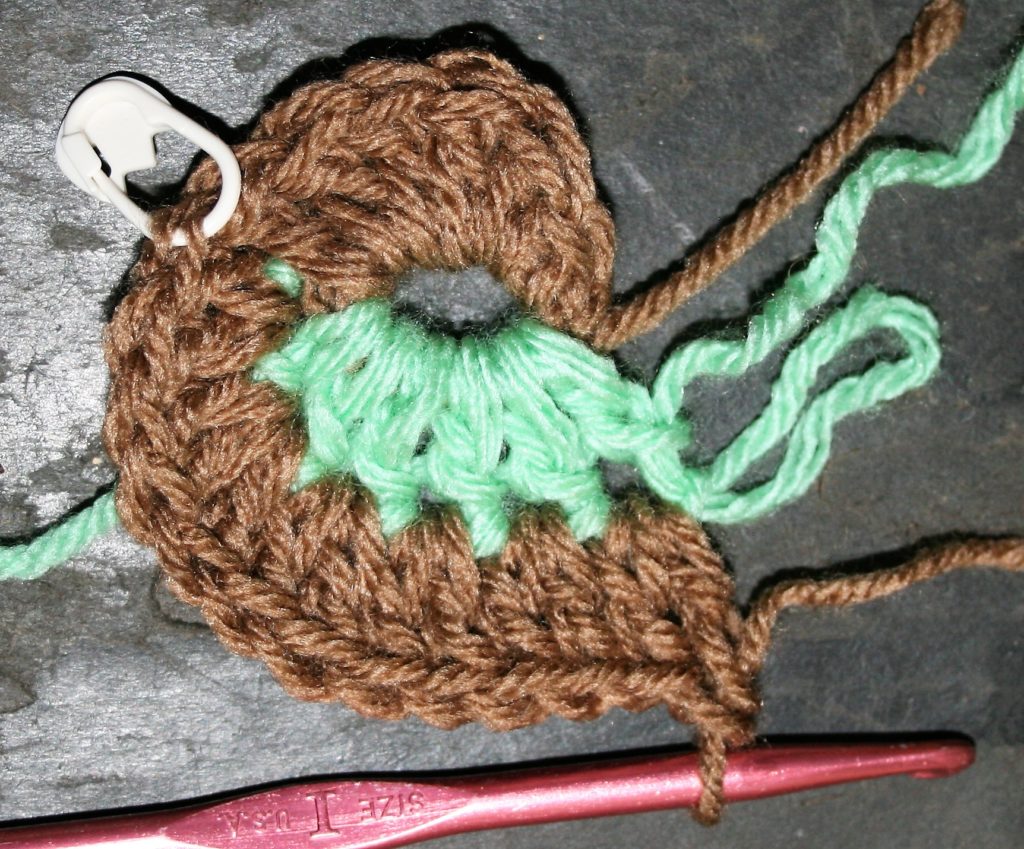
Pick up the second color and work 2 double crochets in each stitch until the stitch marker. This will complete Round 2. Move marker to the last stitch worked in the first color. Notice how it the stitch increases were worked just as a non-color changing round (see my crochet hat formula for how to create a flat circle).
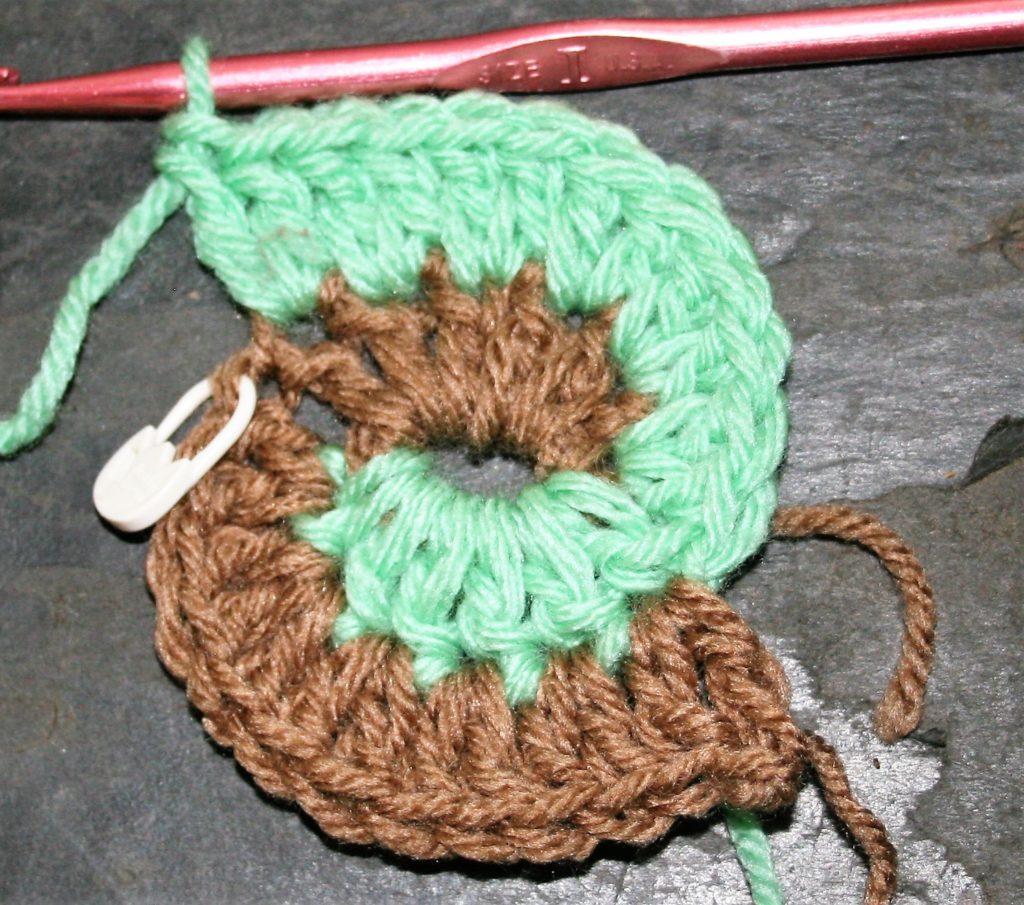
Round 3
Round 3 would be worked with an increase (2 double crochets) and a regular stitch (1 double crochet), so with the 2 colors, pick up the first color work [2 double crochets in the next stitch and then 1 double crochet] to the end of the second color. Pick up the second color and work the same stitch pattern to the stitch marker. This is the end of Round 3.
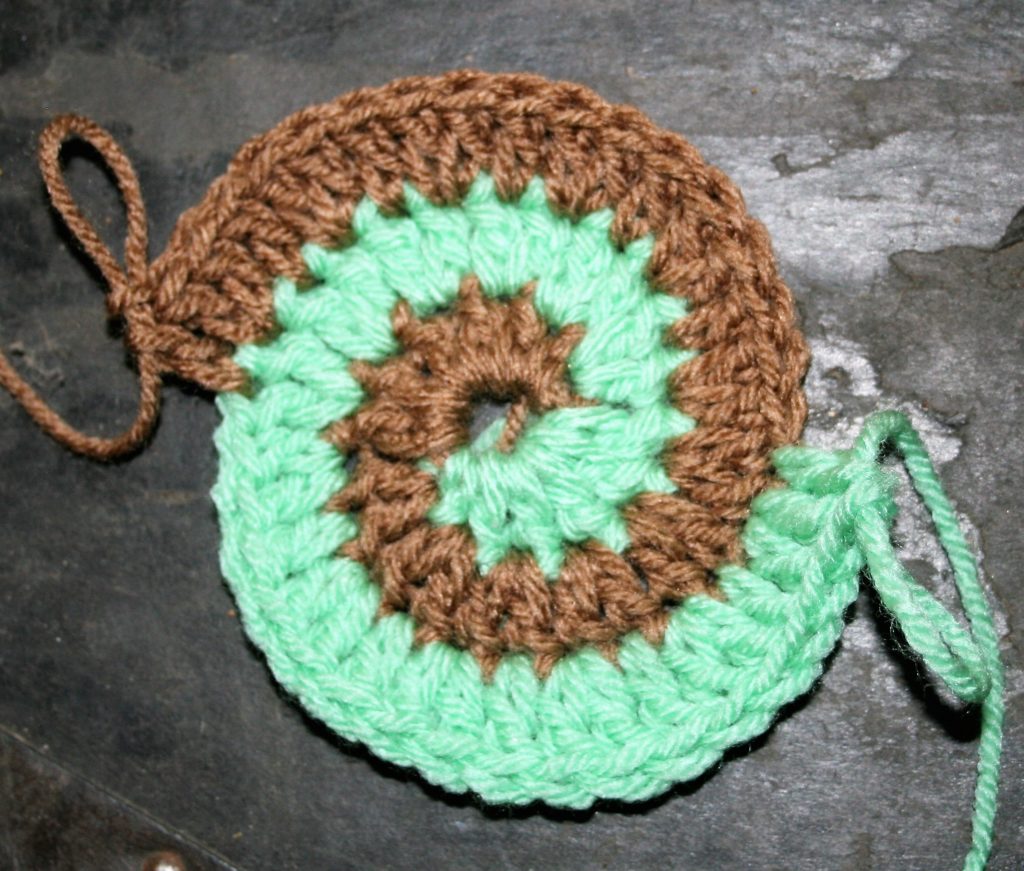
Move the stitch marker to the end of the first color, after the second color reaches it, and continue working the “flat circle formula” until it is the desired size.
To make the edges smooth, finish by working shorter stitches in each color, For example work 1 half double crochet, then 1 single crochet, and finally a slip stitch, and fasten off.

